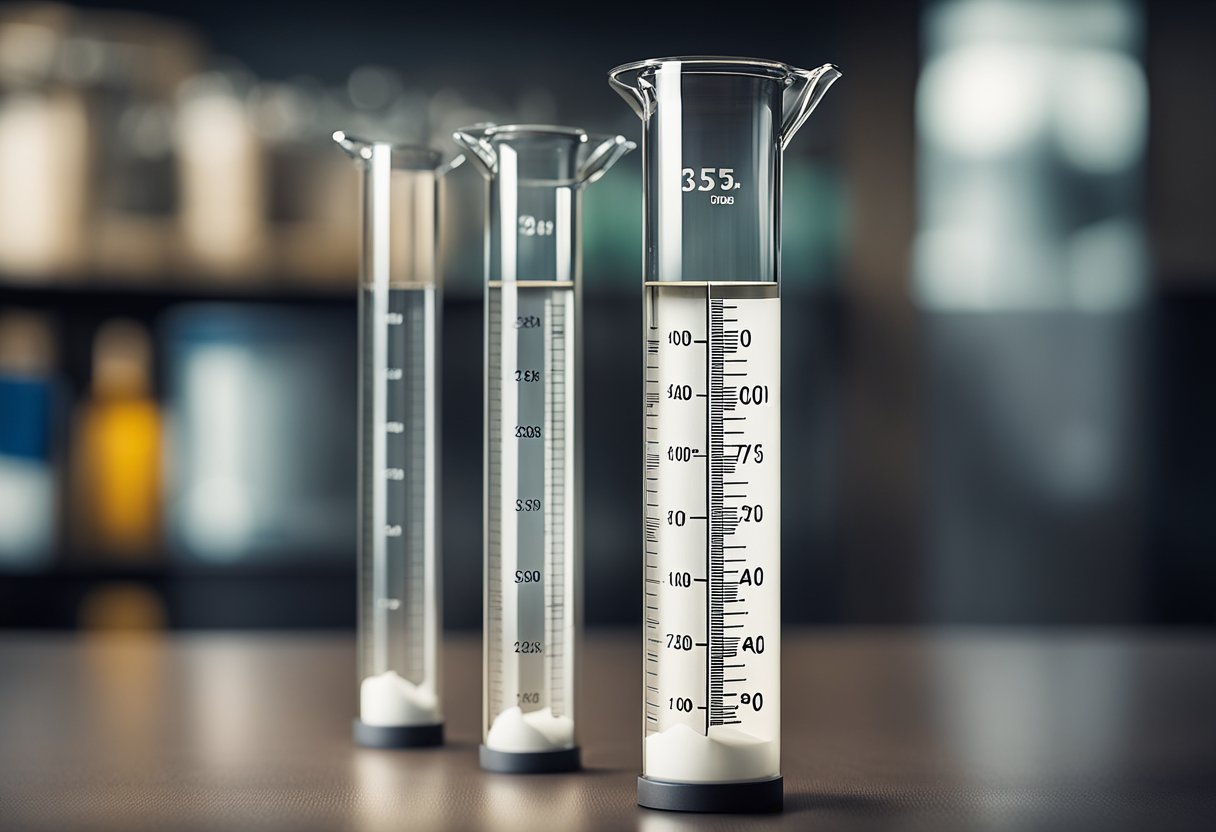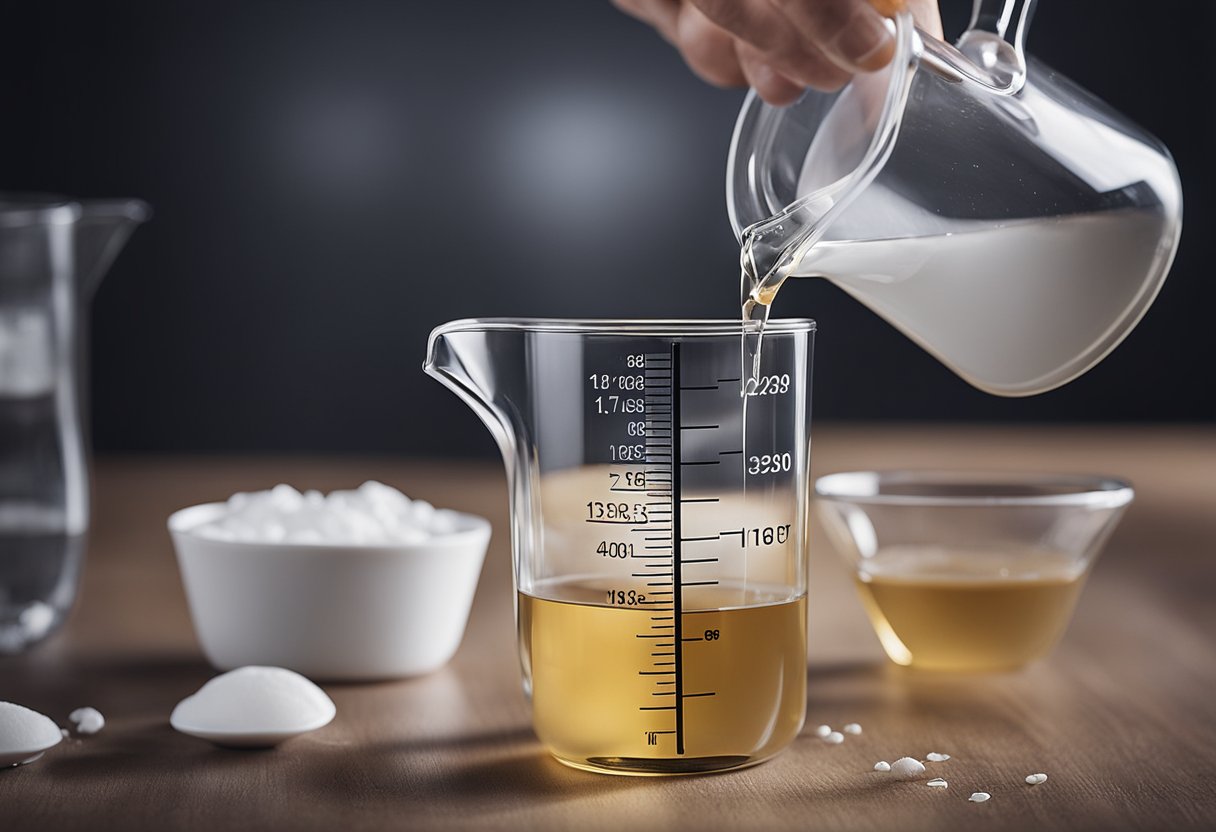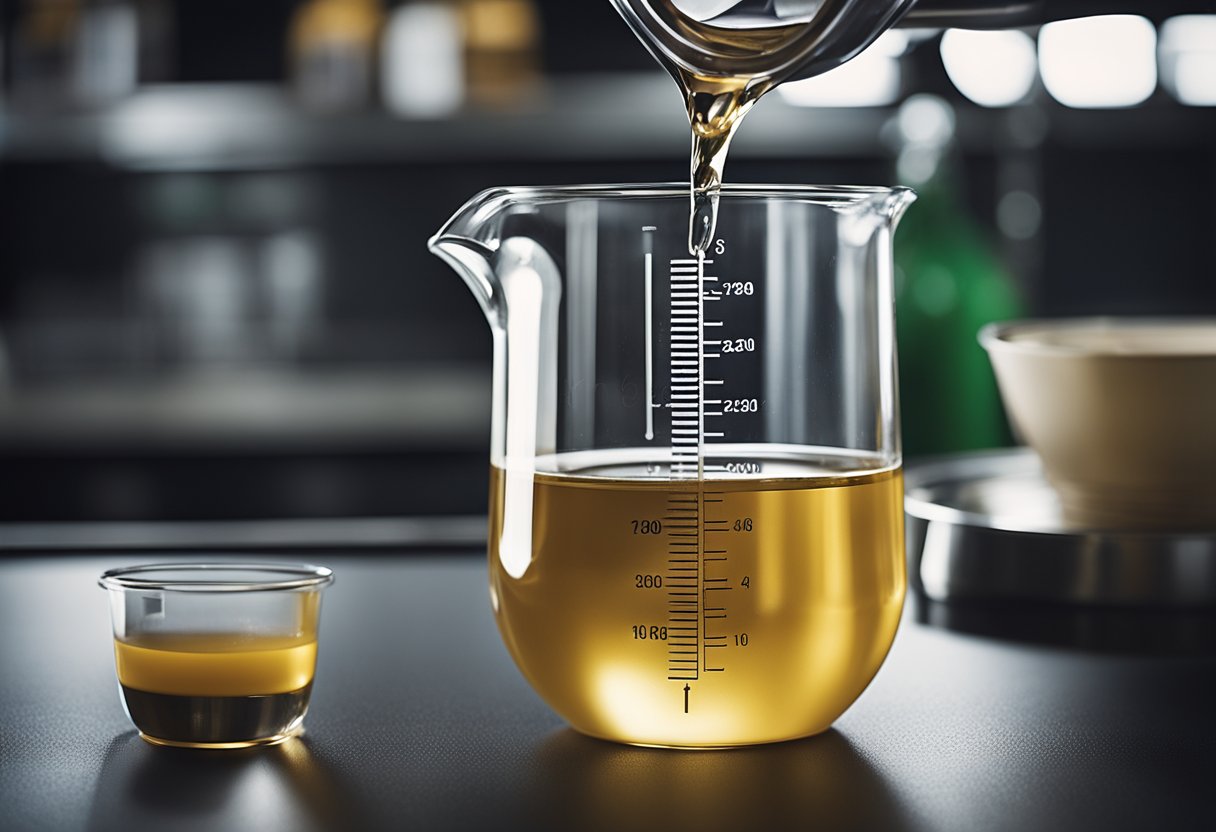1 Liter to ml: Understanding Metric Conversions
One liter is a unit of volume measurement that is commonly used in many countries around the world. It is equivalent to 1000 milliliters (ml) or 1 cubic decimeter (dm3). Understanding the conversion between liters and milliliters is important for many everyday tasks, such as cooking, measuring liquids, and administering medication.

The conversion from liters to milliliters is a simple one. To convert liters to milliliters, you simply multiply the number of liters by 1000. For example, if you have 0.5 liters of water, you can convert it to milliliters by multiplying 0.5 by 1000, which gives you 500 milliliters. Similarly, if you have 2 liters of milk, you can convert it to milliliters by multiplying 2 by 1000, which gives you 2000 milliliters. It is important to note that the conversion works both ways, so you can also convert milliliters to liters by dividing by 1000.
Understanding Volume
https://www.youtube.com/watch?v=luDoyp2G-YM&embed=true
Volume Units
Volume is a physical quantity that measures the amount of space occupied by an object or substance. It is an important concept in physics, chemistry, and engineering. Volume is usually measured in units such as liters, milliliters, cubic meters, and cubic centimeters.
Liter and Milliliter
The liter (L) and milliliter (mL) are two common volume units used in the metric system. The liter is the basic unit of volume in the SI system, and it is defined as the volume of a cube with sides of 10 centimeters. One liter is equal to 1000 milliliters.
The milliliter is a smaller unit of volume that is often used to measure liquids and medications. It is equal to one-thousandth of a liter or 0.001 liters. One milliliter is equivalent to one cubic centimeter (cc).
In the metric system, volume is a derived unit, which means that it is calculated from other base units such as length and time. The SI unit of volume is the cubic meter (m3), which is defined as the volume of a cube with sides of one meter.
Overall, understanding volume is important in many fields, ranging from science to everyday life. The liter and milliliter are two of the most commonly used units of volume in the metric system, and they are widely used in fields such as chemistry, medicine, and engineering.
Conversion Basics
https://www.youtube.com/watch?v=o-s4C6wrwEE&embed=true
Conversion Formula
When it comes to converting liters to milliliters, there is a simple formula that can be used. The formula is as follows:
1 liter = 1000 milliliters
This formula can be used to convert any given amount of liters to milliliters. All you need to do is multiply the number of liters by 1000 to get the equivalent number of milliliters.
For example, if you have 2 liters of water, you can convert it to milliliters using the formula as follows:
2 liters x 1000 = 2000 milliliters
Therefore, 2 liters of water is equal to 2000 milliliters.
Conversion Factor
The conversion factor from liters to milliliters is 1000. This means that one liter is equal to 1000 milliliters. This conversion factor is constant and can be used to convert any amount of liters to milliliters.
It is important to note that the conversion factor only applies when converting from liters to milliliters. If you want to convert from milliliters to liters, you will need to use a different conversion factor.
In conclusion, converting liters to milliliters is a simple process that can be done using the conversion formula and conversion factor. By using these tools, you can easily convert any given amount of liters to milliliters.
Practical Conversion
https://www.youtube.com/watch?v=7JrVR81X79k&embed=true
Liters to Milliliters Table
Converting liters to milliliters is a simple task, but it is essential to get the values correct. To help with this, a conversion table can be used. The following table provides conversions from liters to milliliters:
| Liters | Milliliters |
|---|---|
| 1 | 1000 |
| 2 | 2000 |
| 3 | 3000 |
| 4 | 4000 |
| 5 | 5000 |
| 6 | 6000 |
| 7 | 7000 |
| 8 | 8000 |
| 9 | 9000 |
| 10 | 10000 |
This table can be used to convert any value in liters to milliliters quickly and accurately.
Converter Tools
In addition to using a conversion table, there are also online converter tools available that can make the conversion process even easier. These tools allow users to input the value in liters and instantly receive the corresponding value in milliliters.
Some of the popular converter tools include OnlineConversion.com, RapidTables.com, and ConvertUnits.com. These tools are user-friendly and can be accessed from any device with an internet connection.
Overall, converting liters to milliliters is a simple task that can be accomplished using a conversion table or online converter tool. By using these resources, users can ensure that their conversions are accurate and reliable.
Additional Measurements

Cubic Centimeters
One liter is equal to 1000 cubic centimeters. This means that if you have a volume of 1 liter, you can also express it as 1000 cubic centimeters. Cubic centimeters are often used in scientific and medical fields to measure small volumes, such as the volume of a liquid medication.
Gallons and Liters
In the United States, gallons are commonly used to measure volume, while liters are more commonly used in other parts of the world. One U.S. gallon is equal to approximately 3.785 liters. Conversely, one liter is equal to approximately 0.264 gallons.
Converting between gallons and liters can be useful when traveling or when working with international recipes. For example, if a recipe calls for 2 liters of water and you only have a gallon jug, you would need to know that 2 liters is approximately equal to 0.528 gallons.
Milliliters
One milliliter is equal to 0.001 liters, or one-thousandth of a liter. Milliliters are often used to measure small volumes of liquids, such as in cooking or in laboratory experiments.
Converting between milliliters and liters is straightforward, as 1 liter is equal to 1000 milliliters. For example, if a recipe calls for 500 milliliters of milk and you only have a measuring cup marked in liters, you would know that you need to measure out 0.5 liters of milk.
Overall, understanding how to convert between different units of volume can be useful in a variety of situations, from cooking to scientific research.
Common Uses
https://www.youtube.com/watch?v=bqi2gH36Sug&embed=true
Water Volume
One of the most common uses of 1 liter to ml conversion is for measuring water volume. Many household items, such as water bottles, pitchers, and cooking pots, use liters as a standard measurement. However, for more precise measurements, milliliters are used. For example, a standard water bottle usually holds around 500-600 milliliters of water, while a large water pitcher can hold up to 2 liters of water.
In addition, medical professionals also use milliliters to accurately measure water intake for patients. For instance, a doctor may recommend a patient to drink 2 liters of water per day, which is equivalent to 2000 milliliters.
Other Liquids
Apart from water, 1 liter to ml conversion is also useful for measuring other liquids, such as milk, juice, and soda. In the food industry, liters and milliliters are commonly used to measure liquid ingredients for recipes. For example, a recipe may call for 500 milliliters of milk or 750 milliliters of chicken broth.
Moreover, laboratory technicians use milliliters to measure liquid chemicals for experiments. They need to be precise in their measurements to ensure accurate results. For instance, a lab technician may need to measure 50 milliliters of a certain chemical to add to a solution.
In conclusion, 1 liter to ml conversion is a crucial aspect of measuring liquid volume for various purposes. Whether it is for household use, medical purposes, or laboratory experiments, understanding the conversion between liters and milliliters is essential for accurate measurements.
Technical Details
Abbreviations and Symbols
In the context of volume measurements, the most commonly used abbreviations are “L” for liter and “mL” for milliliter. Both of these abbreviations are derived from the base unit of volume in the International System of Units (SI), which is the cubic meter (m³). The prefix “milli” means one-thousandth, so one milliliter is equal to one-thousandth of a liter.
Mathematical Representation
To convert liters to milliliters, the following formula can be used:
mL = L x 1000This formula simply multiplies the number of liters by 1000 to get the equivalent number of milliliters. For example, 1 liter is equal to 1000 milliliters.
Both liters and milliliters are units of volume, which means they are used to measure the amount of space that an object or substance occupies. In general, milliliters are used to measure smaller volumes, while liters are used to measure larger volumes.
It is important to note that volume measurements are often used in scientific and technical contexts, where precise measurements are required. Therefore, it is important to use the correct units and formulas when making volume measurements.
In summary, the conversion from liters to milliliters is a simple one, as one liter is equal to 1000 milliliters. The use of abbreviations and symbols such as “L” and “mL” is common in volume measurements, and the formula for converting between liters and milliliters is straightforward.
FAQs
https://www.youtube.com/watch?v=K-DPp1iaqTo&embed=true
Conversion Accuracy
When converting from liters to milliliters, it is important to note that the conversion factor is 1000. This means that one liter is equal to 1000 milliliters. The accuracy of this conversion is highly precise, as it is based on the metric system which is internationally recognized for its accuracy and consistency.
It is important to note that the conversion factor is based on the definition of a liter, which is defined as one cubic decimeter. Therefore, the conversion factor of 1000 is consistent with the definition of a liter, making it a reliable and accurate conversion.
Related Conversions
When dealing with conversions between different units of measurement, it is common to come across related conversions. For example, one liter is equivalent to 0.001 cubic meters, or 0.264 gallons.
Another related conversion is between liters and kilograms, which is dependent on the substance being measured. For water, one liter is equal to one kilogram, but for other substances, the conversion factor may be different.
It is also important to note that when dealing with very small quantities, such as in laboratory settings, the milliliter may be further divided into smaller units such as microliters or even nanoliters. In such cases, the conversion factor may be different, such as 1 milliliter being equivalent to 1000 microliters.
Overall, when converting between liters and milliliters, the accuracy of the conversion is highly precise and reliable, based on the internationally recognized metric system. Related conversions may also be useful in certain contexts, depending on the substance being measured.
Conclusion

In summary, converting between liters and milliliters is a straightforward process that involves multiplying or dividing by 1000. One liter is equivalent to 1000 milliliters, while one milliliter is 0.001 liters.
This conversion is particularly useful in scientific and medical fields where precise measurements are necessary. For example, when administering medication, dosages may be given in milliliters, and it is important to know how many milliliters are equivalent to a given number of liters.
It is also worth noting that the conversion between liters and milliliters can be easily done using online calculators or mobile apps. However, it is always useful to know the conversion factor and be able to perform the calculation manually.
Overall, understanding the relationship between liters and milliliters is a fundamental aspect of measurement and can be applied in various contexts. By keeping in mind the conversion factor of 1000, one can easily convert between these two units of volume.